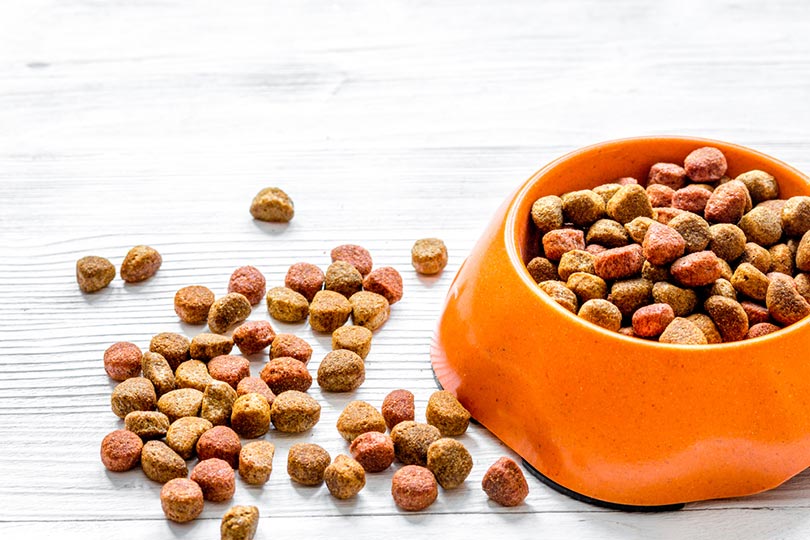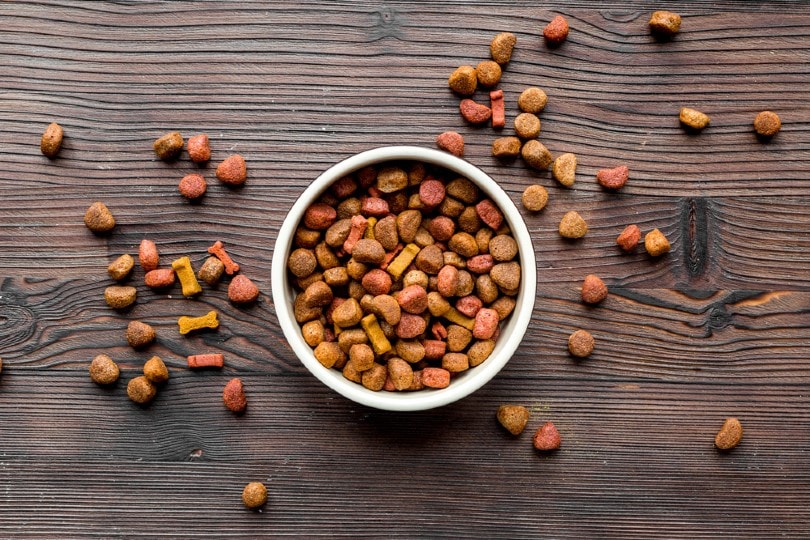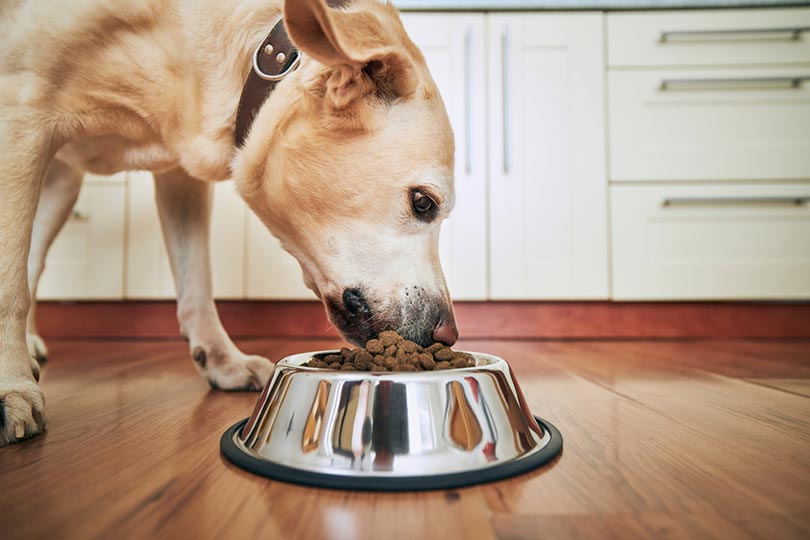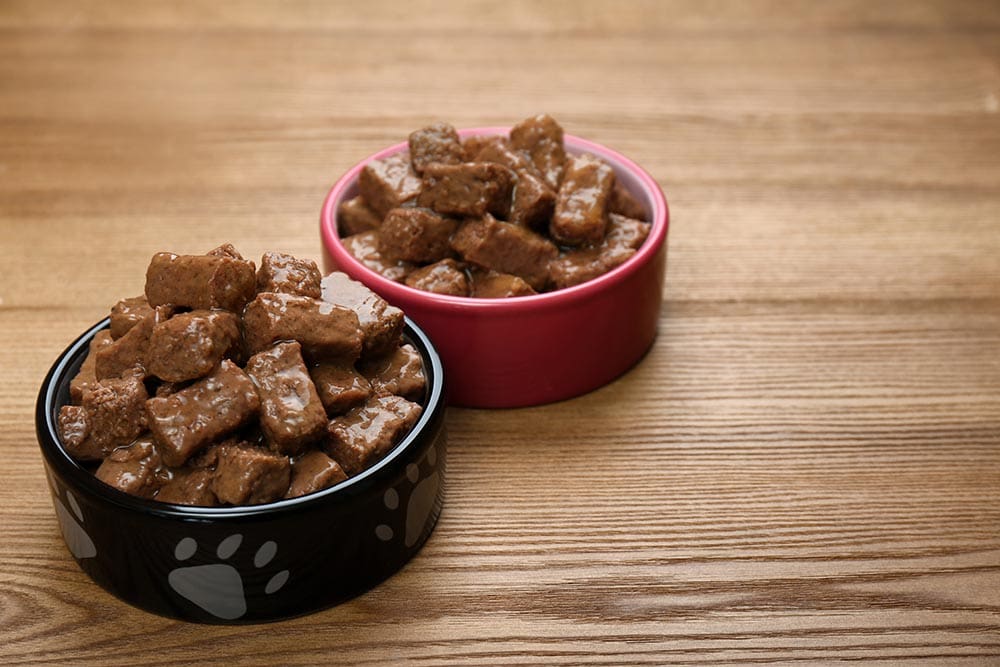What Is Crude Protein in Dog Food? Vet-Approved Benefits & Concerns

Updated on

Click to Skip Ahead
We want to help you know what you’re looking at, so we created this guide that breaks down everything you need to know about crude protein in dog food and how much your dog should have. Crude protein is the percent of your dog’s food that is protein when measured by weight.
What Is Crude Protein?
While crude protein can be an extremely useful metric to determine what’s in dog food, it has its limitations.
Crude protein is a measurement of protein rather than a comment on the quality of that protein. It is usually denoted as a percentage of the whole weight of the food. A food with 20% crude protein means that protein from all sources makes up 20% of the food.
Crude protein is the total amount of mineral nitrogen inside pet food multiplied by 6.25. The chemical analysis of nitrogen gives you a good estimate (crude) of how much protein is in the food simply because nitrogen is mostly found in proteins. All sources of nitrogen are measured, so the protein content will consist of meat, vegetables, and supplemental sources of protein found in the food.

Limitations of Crude Protein
While crude protein can be an extremely useful metric to determine what’s in dog food, it has its limitations. This is where things can get a bit more technical. As crude protein, fat and even crude fiber are a percentage of the weight of the food; this includes the weight of water in the food. This means that you can’t directly compare foods with differing water content, such as kibble with tins.
To do this, you need to use a converter and find out the protein by dry matter. For example, a biscuit food containing 20% crude protein and 10% water as fed has a dry matter protein content of 22.2%. Tinned food with 3.5% protein and 83% water has a dry matter protein of 20.5%. This allows you to compare the two foods.
How Much Protein Does Your Dog Need?
When you’re trying to figure out what dog food to go with, you need to know what your dog requires. PetMD recommends sticking with a dog food with around a minimum of 18% dry matter, quality protein for maintenance, and 22% quality protein for growth.

What Is a Good Crude Protein Percent for Dry Food?
When you’re looking at crude protein contents, you will mostly find that they have higher crude protein than the minimum recommended.. For dry dog foods, you’re typically looking for a crude protein content between 20% and 25% unless you have a puppy or an extremely active dog.
In those cases, you want a crude protein content closer to 30% to meet the activity levels of your pup. For older or less active dogs, try to stay closer to the 20% mark.
What Is a Good Crude Protein Percent for Wet Food?
When looking at crude protein amounts in dog food, it’s essential to remember that wet and dry dog foods have drastically different crude protein amounts due to the water content.
You won’t find wet dog food with 20% or 30% crude protein, and if you did, it would be way too much for your dog.
If you’re feeding wet food to your dog, a crude protein content between 3.5% and 10% is more than enough (moisture content around 83%). Try to stick to a lower crude protein content for older dogs and a higher protein content for puppies and more active dogs.

Why Are There Different Crude Protein Percentages for Dry and Wet Food?
When you’re looking at the different crude protein contents for wet and dry dog foods, it can be confusing. But that’s because they’re on an “as-fed” basis.
As we discussed above, wet dog food has more moisture, making it look like it has less protein. However, when you compare the two foods on the same playing field, on a dry matter basis, the number for total protein content in the wet dog food skyrockets.
Final Thoughts
Now that you know more about crude protein numbers and what they mean, it’s up to you to check dog food labels to figure out exactly what you’re getting.
It can be overwhelming at times but taking your time and doing your research is worth it when you know that you’re giving your dog a great quality food that meets all their nutritional requirements.
See Also:
- 12 Good Protein Sources for Your Dog (Vet Approved)
- TBHQ In Dog Food: Vet-Reviewed Safety & Controversy Facts
Featured Image Credit: 279photo Studio, Shutterstock












